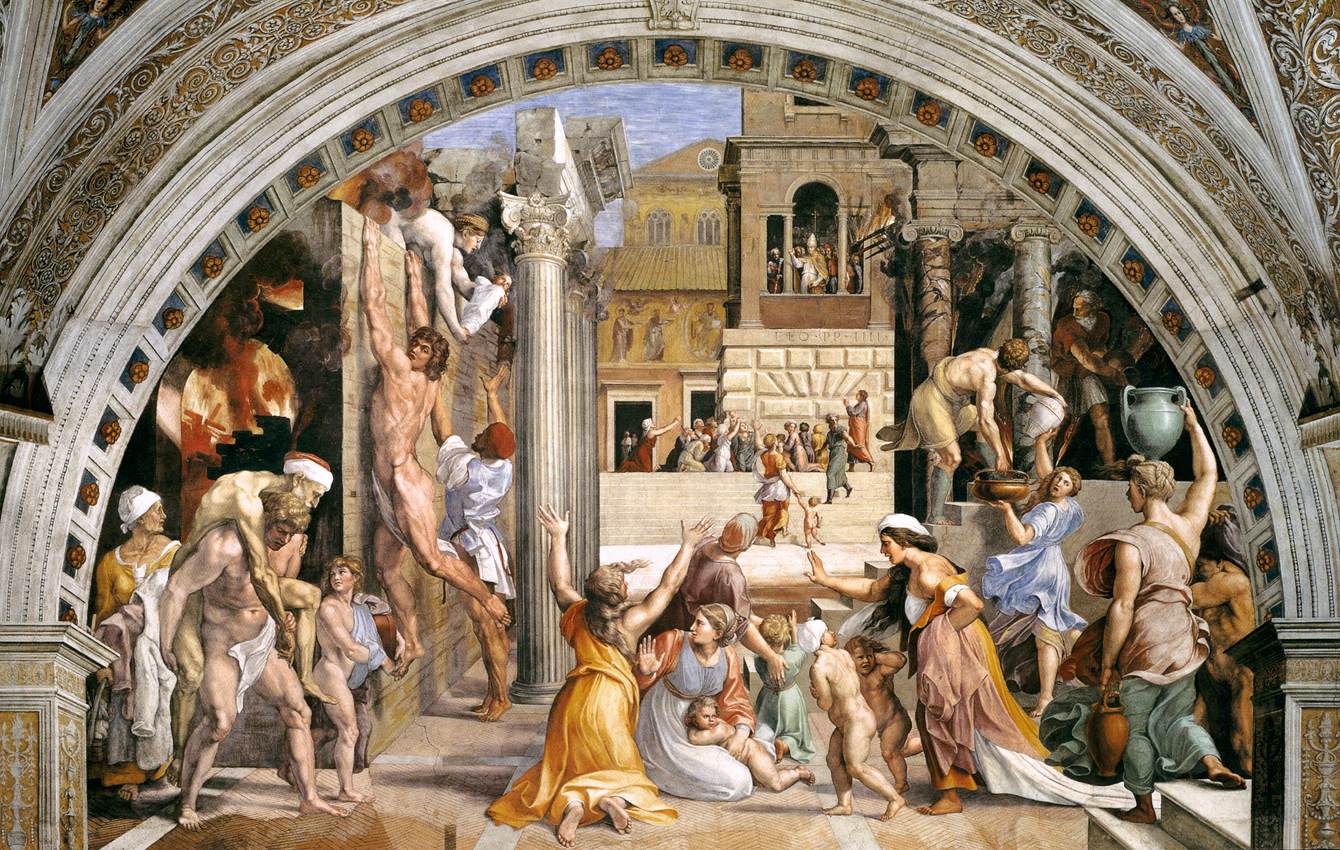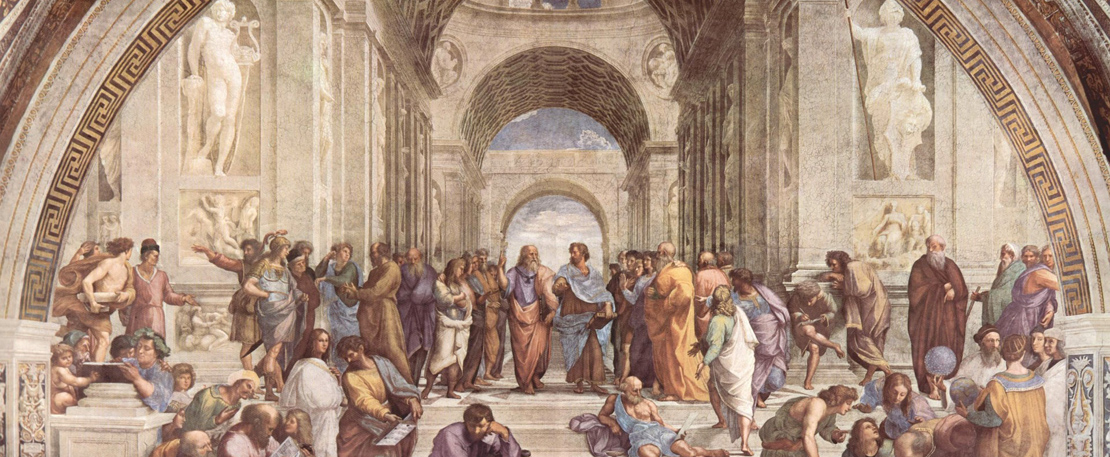The Raphael’s rooms (Stanze di Raffaello) are four rooms along the museum path of Vatican Museums. The four rooms were painted by the famous Renaissance artist, Raphael, and his pupils. Along with Michelangelo’s frescoes in the Sistine Chapel, they represent the most important frescoes of the High Renaissance.
The rooms were originally painted for the apartments of Pope Julius II. Raphael was commissioned by the Pope to transform and improve the decor of his rooms in 1508.
The Raphael's Rooms: the Room of Constantine
Each room was painted with unique themes: the sequence of the rooms starts with the Room of Constantine. Here the walls and frescoes of this room depicts four episodes in the life of emperor Constantine: the first emperor that recognized Christianity as his faith, therefore an important personality for Christianity. The episodes include the Vision of the Cross, the Battle of Constantine against Maxentius, the Baptism of Constantine and the Donation of Rome. In this last fresco, the emperor Constantine kneels before Pope Sylvester in the act of offering him the city of Rome. The ceiling of the room is painted with the theme of the Triumph of Christian religion over pagan idols and practices.
The Raphael's Rooms: the Room of Heliodorus
The second room is the Room of Heliodorus. This room was painted with political themes and episodes when the Church was protected miraculously by God. The Mass of Bolsena shows an episode that took place in 1263 near Orvieto. Here Christian faith is threatened by the doubts of a celebrant of the mass and then it is revealed by true by God. In the same room, the Liberation of St Peter shows the prince of apostles and first Pope being saved from prison by an angel. The contrast between dark and light makes it a fresco of extreme beauty. Then, the Encounter of Leo the Great with Attila shows an apparition of Saint Peter and Saint Paul armed with swords during the meeting between Pope Leo and Attila, and it was completed after the death of Julius II. Expulsion of Heliodorus from the Temple illustrates a biblical episode. Here Heliodorus, attempting to steal a treasure preserved in the temple of Jerusalem, is banished from a horseman and two youths, sent directly by God.
The Raphael's Rooms: the Room of the Segnatura
The third room is The Room of the Segnatura. It houses Raphael’s most famous frescoes. The master’s works in this room also signifies the beginning of the high Renaissance. The themes in this room are focused on conveying the concepts of truth, good and beauty. The first theme, Disputation of the Most Holy Sacrament corresponds to Theology (as it is on the wall opposite to the School of Athens) and its victory over any arguments against it. The second theme, School of Athens portrays the most famous philosophers of ancient times discussing together. Here, the concepts of rational truth and knowledge are expressed through the movements of the philosophers throughout the whole painting. On the same room, Cardinal and Theological Virtues and the Law, the third theme, illustrates the virtues of faith, hope and charity. It was commissioned by Julius II. Parnassus, the last theme, depicts Apollo and the Muses on the Mount Parnassus. Apollo plays the lyre surrounded by ancient and modern poets as Homer, Dante and Sapphos.

The Raphael's Rooms: the Room of the Fire in the Borgo
The last room, called the Room of the Fire in the Borgo show some political journeys of Pope Leo III and Pope Leo IV. The actual intention of the theme was to show the ambitions of Pope Leo X. The first theme of this room is called Crowning of Charlemagne and shows Charlemagne being crowned as the emperor of Rome. The second theme is Justification of Leo III, which shows the Pope Leo III responding to calumnies, and claiming that the “vicar of Christ is responsible to God alone for his actions”. Fire in the Borgo is the third theme and it tells the story of a fire that broke out in the neighbourhood in front of St Peter’s basilica, miraculously extinguished by Pope Leo IV with his blessing. The last theme of this room is called Battle of Ostia and shows the victory of Pope Leo IV and his armies in 846 against the Saracens.
The Raphael's Rooms: how to visit them
If you want to visit the the Raphael's Rooms, you should enter first the Vatican Museums. Actually the Raphael's Rooms are part of teh Pope museums.



 EN
EN  ES
ES  DE
DE  FR
FR  IT
IT 